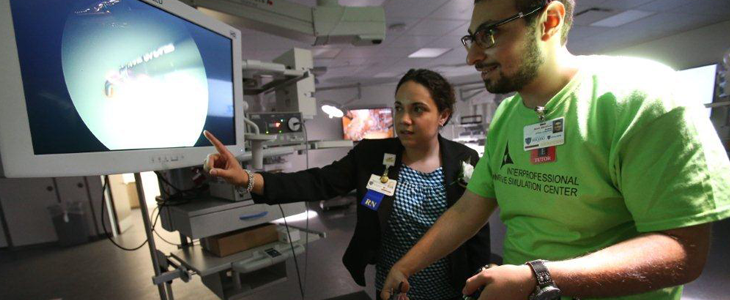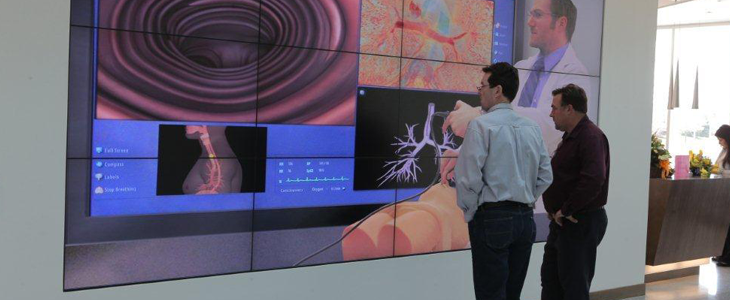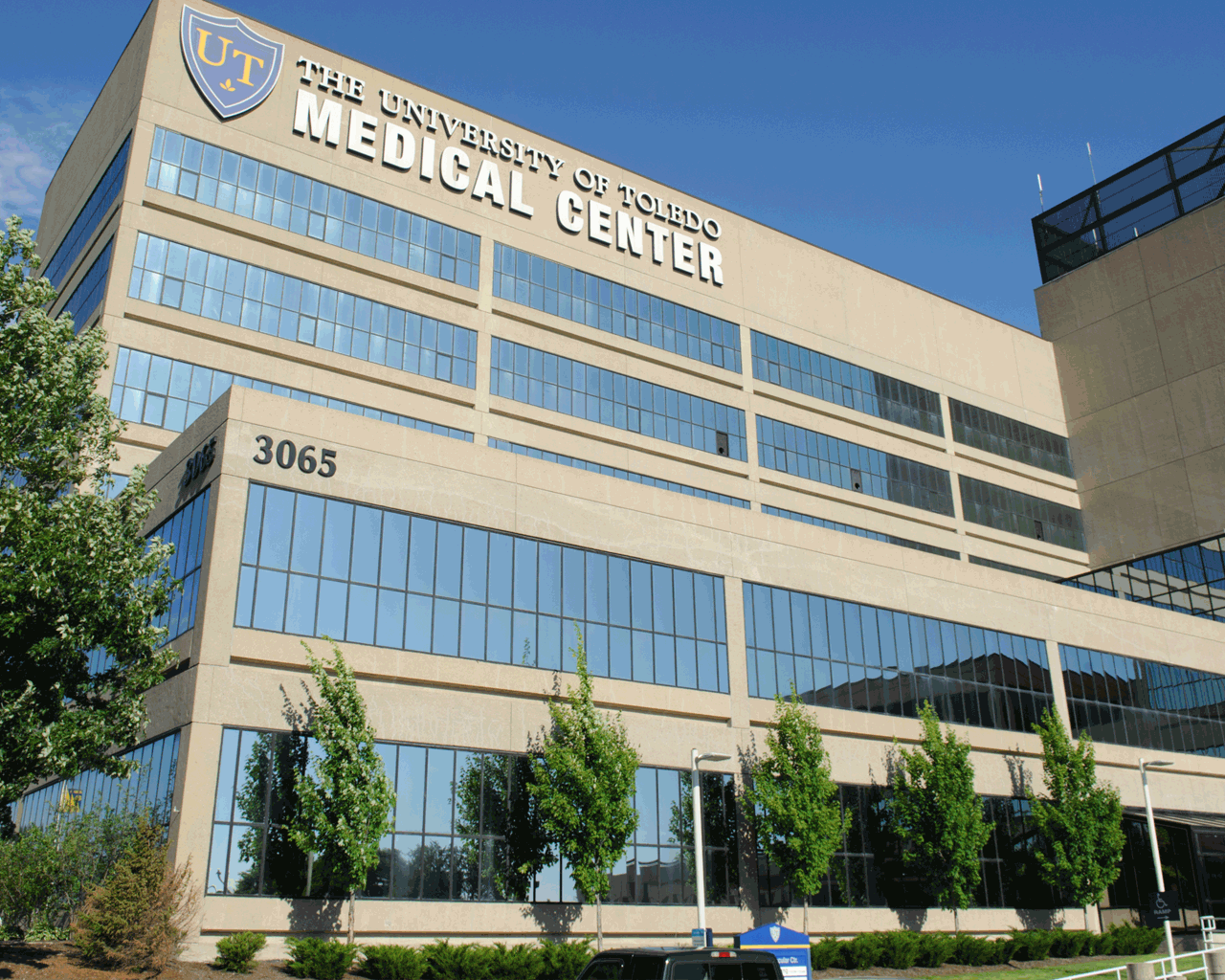The University of Toledo Foundation
2014 UT Foundation Annual Report
Jacobs Simulation Center Looks toward the Future of Education

Medical student Mark Abraham practices surgery with a few pointers from Cristina Alvarado, clinical simulation and education research associate, during an open house in April in the Interprofessional Immersive Simulation Center.
UT students will be able to “fly through” high-definition images of the human body from cells to organs, work on an oil rig, or design a new kind of automobile, thanks to technology at the Lloyd A. Jacobs Interprofessional Immersive Simulation Center (IISC) at The University of Toledo Medical Center.
The IISC, named in honor of UT’s past president Dr. Lloyd Jacobs, opened in spring 2014 on UT’s Health Science Campus. The three-story, 65,000-square-foot center is equipped with high technology to enhance education and skills for UT students, particularly those in medicine, nursing, pharmacy, therapy, and other health professions.
The Center includes simulated hospital rooms, an intensive care unit, trauma suite, operating room, and labor and delivery room. UT students learn to care for patients by practicing skills and procedures using simulation, as well as working as teams in a virtual hospital equipped with human patient simulators.

A UTMC resident inserts a scope into a bronchoscopy simulator, as Terry Kenny and Mike Maserjian, from Barco, Inc., one of the Center’s industry suppliers, look on. The monitors provide patient data and “teaching roadmaps” that help guide the scope through the airway.
"Using simulation, just like the aviation industry, health care professionals can now practice a wide range of procedures and patient scenarios without placing actual patients at risk,” said Dr. Pamela Boyers, executive director of the IISC. “The Center is unique in that it encompasses the widest range of simulation technology available, providing healthcare professionals with a safe place to practice skills over and over again until they become proficient."
Debriefing rooms encourage team problem-solving and discussions to improve patient care and team performance, resulting in fewer medical errors and better patient outcomes.
Dr. Boyers said the IISC is designed to transform the education of doctors, nurses, and other healthcare professionals by using highly advanced technologies to stimulate new ways to learn, teach, and engage in research. She said the training of healthcare professionals is changing in ways that could only have been imagined a decade ago. “This transformational simulation center is well ahead of the curve in healthcare education,” she noted, “and positions the University to remain ahead of the curve for years to come."
While individual technological components of the UT facility may exist at other simulation centers, UT is among the first to bring together this wide range of simulation technologies in what Dr. Boyers calls the “tri-center concept.”
“The tri-center concept incorporates 3D and virtual immersive reality environments, advanced surgical training, as well as human patient simulators in simulated hospital and community settings," she explained.
In addition to supporting faculty and students at UT, the Center also works closely with global industry collaborators, other health-care organizations, and even the U.S. military.
“Now that we have the programs for health care professionals well underway, we are looking forward to expanding our offerings to our colleagues on the main UT campus,” said Dr. Boyers. “We believe that the Center offers opportunities for partnering with a wide range of disciplines, including engineering, business, law, and the arts." The Center is a unique blend of an academic and business model, she said, designed to bring research and development opportunities, as well as new work force training opportunities to Toledo and the region.
Several donors supported the facility’s technology and programs through significant gifts, including Dr. Gerald Zelenock in memory of his wife Mary Kate, and Tom and Susan Palmer. Other fund-raising opportunities are available, according to Howard Newman, associate vice president of development for UT’s Health Science Campus.
“There are numerous opportunities to name facilities in the Center, as well as contribute to an endowment for directorship by Dr. Boyers,” he said. “Philanthropy will have a great role in endowing the future of the Center, encouraging innovative work in simulation, the development of new training programs, and assuring new applications of technology and many innovations in both the medical and nonmedical fields.”
For information about making a gift in support of the IISC, contact Howard Newman at howard.newman@utoledo.edu or 419-383-6840.

